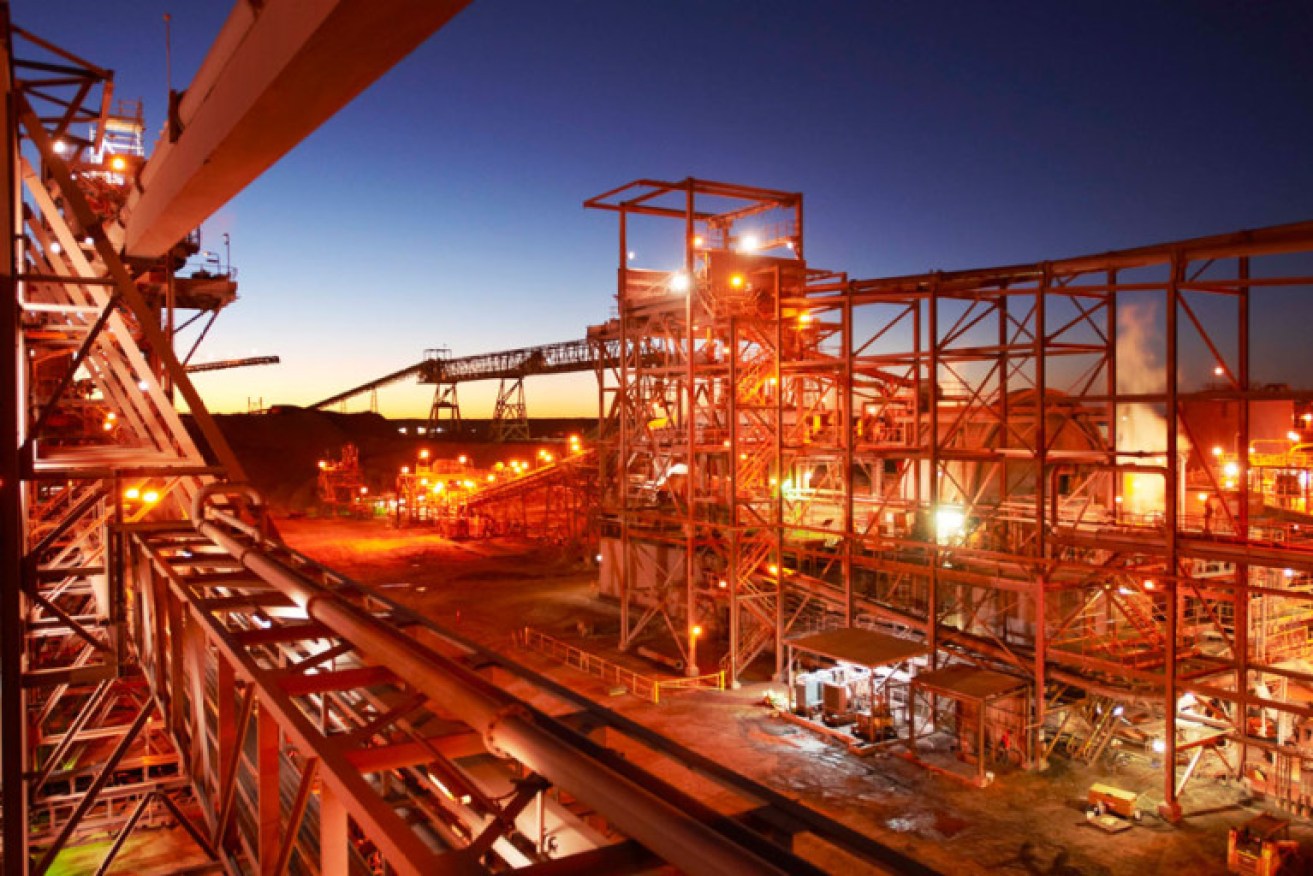BHP Billiton says testing of new technology that may enable an expansion of its massive Olympic Dam is going well, but a decision is some time away.
The use of heap leaching – a cheaper way of using chemicals to process valuable minerals – was showing promise, chief executive Andrew Mackenzie said.
“If heap leaching pilot tests currently underway are successful, and they are showing promise, we will use this technology and phased expansions of the underground mine to further increase Olympic Dam’s output,” he told shareholders at BHP’s annual general meeting in Adelaide today.
BHP cancelled in 2012 a $30 billion open pit expansion of Olympic Dam, one of the world’s largest copper and uranium deposits, amid falling commodity prices. The project would have created the world’s largest mine and was viewed as crucial to South Australia’s economic development.
The mine is highly connected to copper markets, then uranium, and any expansion is contingent on confidence it can deliver robust returns, Mr Mackenzie said.
But several shareholders were critical of the company for continually mining uranium in the wake of Japan’s Fukushima disaster, and for producing thermal coal due to its carbon emissions.
BHP executives were repeatedly attacked for the company’s environmental record and efforts to tackle climate change.
One anti-coal group, The Sunrise Project, flew an Indonesian Borneo man to the meeting, who asked BHP to pull out of the IndoMet proposed coal project he says will destroy rainforest and pollute water sources relied on by one million people.
BHP Billiton chairman Jac Nasser said BHP accepted the science on climate change and had donated funds to the cause, but would not abruptly abandon coal mining, and said uranium mining could help to reduce emissions.
Earlier, Mr Nasser has told shareholders at the AGM that the company’s multi-billion-dollar plan to demerge some of its assets would benefit them.
The move would benefit its key assets of copper, petroleum, iron ore and metallurgical coal, on which the company’s key strategy remained focused as it offloaded other projects.
China would remain a major driver of global growth and BHP’s resources, but its rate of growth was gradually declining as its economy continued to mature, Mr Nasser said.
He said the rationale for the split – which will demerge BHP’s aluminium, manganese, silver and some coal and nickel assets – was that BHP’s portfolio had evolved into what the company saw as two distinct companies.
“Our strategy was to direct capital to projects in businesses that delivered the highest returns. This strategy has served our shareholders well.
“$US1000 invested by you in BHP Billiton 10 years ago is worth $US3600 today. We see benefits for both companies and for all shareholders.”
Mr Nasser said BHP could reduce costs and improve the productivity of its largest businesses more quickly if the demerger went ahead.
“The new company will benefit from its own strategy and systems that will be tailored for a business of its scale,” he said.
Mr Nasser said an extraordinary general meeting was planned for May 2015 so shareholders could vote on the demerger.
Shareholders in March will receive documents with full details of the proposed demerger.
Mr Nasser also talked up BHP’s potential fifth major commodity Potash, as driving food production through its use as a fertiliser.
Despite the end of the mining boom and urgent calls from the government and the Reserve Bank for other sectors to step up, he highlighted how important the resources industry remained to the Australian economy.
Mining remained the main contributor to economic growth in the 2014 financial year, he said, with economic growth moderate at three per cent.
“The industry’s export earnings increased by 12 per cent to $US195 billion, representing more than half of Australia’s export earnings.
“There are very few industries in Australia that have world scale and are globally competitive. The resources industry is one of them; an industry that is ready to lead Australia’s prosperity for decades to come.”
China, together with other emerging markets, would drive demand for natural resources into the future.
“In turn, this will continue to benefit Australia’s economy if the nation can remain competitive,” he said.
Andrew Mackenzie focused on the importance of lifting productivity, which he said was a major driver of BHP lifting profitability by 10 per cent to $US13.4 billion in 2013/14 despite falls in commodity prices.
He also defended the company’s payment of taxes, saying it paid its fair share – $US9.9 billion in taxes and royalties last year – amid a focus on tax avoidance by large global companies recently.
A key focus for South Australia, which is hosting the AGM, is BHP’s plans for expanding the massive Olympic Dam which were shelved two years ago.
He said the company was successfully developing heap leaching technology to process metals at Olympic Dam and would update the South Australian government on progress.
Protestors gathered outside the AGM in Adelaide this morning to protest BHP Billiton’s use of only fly-in fly-out workers instead of locals at two new coal mines in central Queensland.
The move was squarely aimed at controlling the workforce, said Construction, Forestry, Mining and Energy Union general vice-president Wayne McAndrew.
“It is all about controlling the workforce not only whilst they are at work but controlling what they do whilst outside of it, completely during their work cycle,” he said.
“Compulsory 100 per cent FIFO discriminates against local workers who can’t apply for jobs in mines near their communities, and it also denies FIFO workers any choice about their lifestyle and where they live.”





